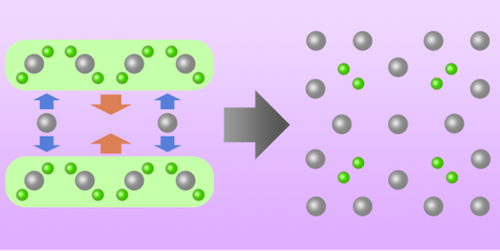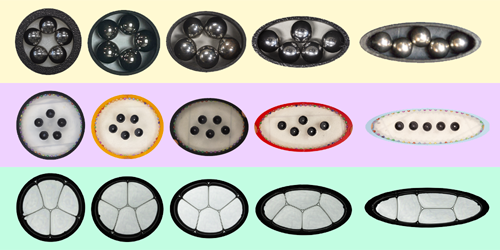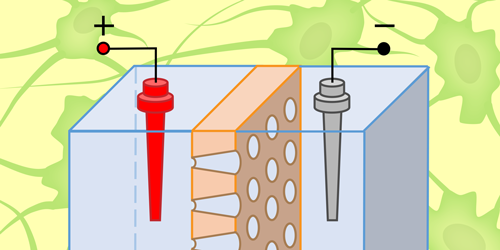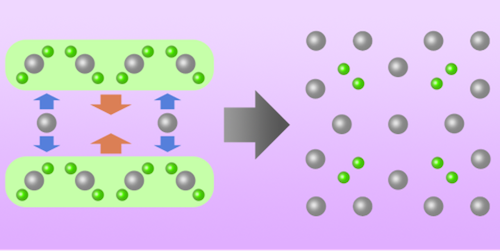November 12, 2025• Physics 18, s148
Adding extra atoms between sheets of PdSe2 doesn’t affect the material’s layered structure—until it does.
Q. Yang et al. [1]; adapted by APS

Q. Yang et al. [1]; adapted by APS
Stacked monolayers of graphene and other 2D materials are held together by weak van der Waals forces. When additional atoms are introduced between the layers, a typical stack promptly accommodates the extra atoms through deformation. Qishuo Yang at the Southern University of Science and Technology in China and his colleagues have now found a stacked 2D material that responds as strongly but belatedly [1]. Through experiments and simulations, the researchers determined that the 2D semiconductor palladium diselenide (PdSe2) keeps its original form as its interlayer spaces are packed with additional Pd atoms and then switches abruptly to a new and thicker 3D structure.
The team applied a 2-nm-thick Pd coating to a few-layer PdSe2 flake and placed it on a microheater. Simulations had revealed that mild heating mobilized atoms in the Pd coating, giving them enough energy to diffuse vertically through the PdSe2 layers and into the spaces between. As the researchers heated their sample to 520 K, they monitored its structure with an electron microscope. The atoms appeared to exert an outward pressure that countered the van der Waals attraction, pushing the layers apart slightly. When enough atoms had accumulated, the interlayer attraction was abruptly overcome, yielding a new 3D structure with the composition Pd17Se15.
The phase transition evidently proceeded without spreading from discrete nucleation sites. Studying such delayed, non-nucleated transformations could lead to new strategies for designing responsive or reconfigurable layered materials, the researchers say.
–Marric Stephens
Marric Stephens is a Corresponding Editor for Physics Magazine based in Bristol, UK.
ReferencesQ. Yang et al., “Latent phase transition in two-dimensional PdSe2,” Phys. Rev. Lett. 135, 206102 (2025).Latent Phase Transition in Two-Dimensional PdSe2
Qishuo Yang, Yabei Wu, Liang Zhu, Junjie Shan, Gang Wang, Xingxing Li, Erding Zhao, Shaolong Jiang, Xiao-lei Shi, Zhi-gang Chen, Jin Zou, Shi-Jun Liang, Feng Miao, Wenqing Zhang, and Junhao Lin
Phys. Rev. Lett. 135, 206102 (2025)
Published November 12, 2025
Subject AreasMaterials ScienceAtomic and Molecular PhysicsRelated Articles

 More Articles
More Articles

